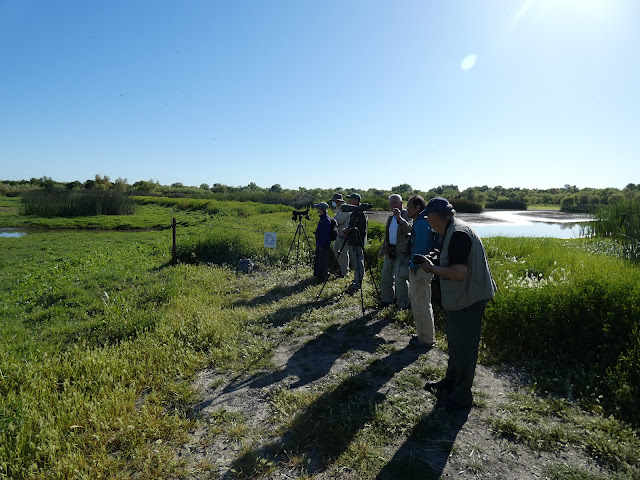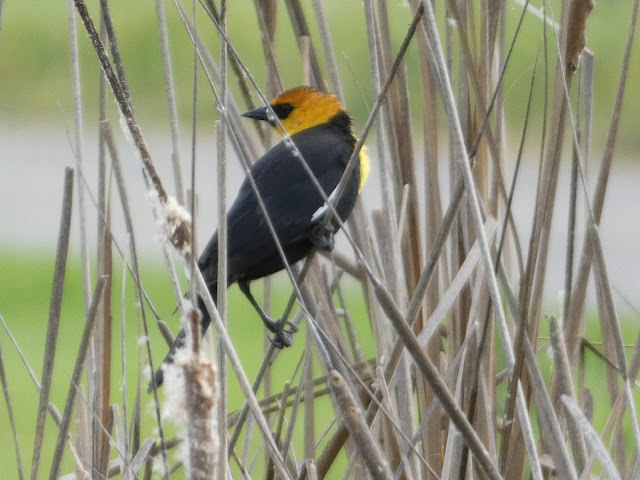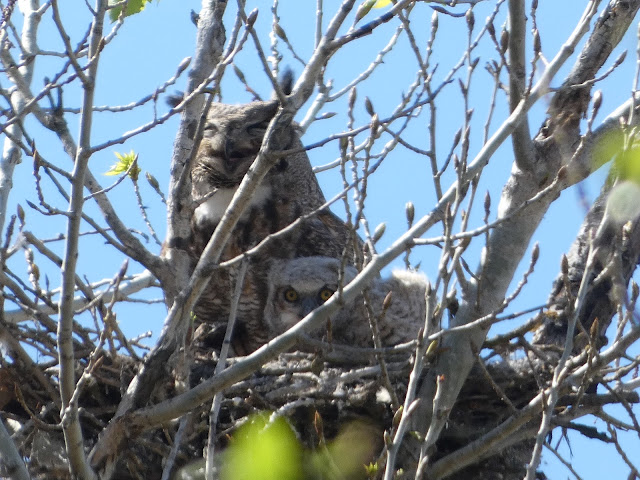It was sunset before I saw the flurry of emails and online reports, so I was going to have to pin my hopes that it might hang around a little the next day. So I got up bright and early, arrived at the refuge at 6:45 AM, and of course...nothing. That's my kind of luck, my rare bird jinx. I scanned the area for some time, but then gave up. And besides, the San Joaquin River National Wildlife Refuge is a special place for many reasons, so I spent the next hour recording nearly three dozen species. But in the end I returned to the spot where the bird had been sighted again, and....nothing.
I shifted strategy, and drove up the road to an adjacent floodplain where the Spoonbill could have gone. And nothing once again. I was being stubborn, so I decided to give it one last chance and go back to the original discovery sight, and found a couple of other birders hoping to catch a look. And...nothing.
But...I walked a bit slowly, and just as I was about to disappear from their sight they started yelling and waving their arms. The Spoonbill had arrived! And for once the jinx was broken, and I got to see a very rare bird. And it was pretty impressive even if the picture are a little grainy. It was pretty far away.






















